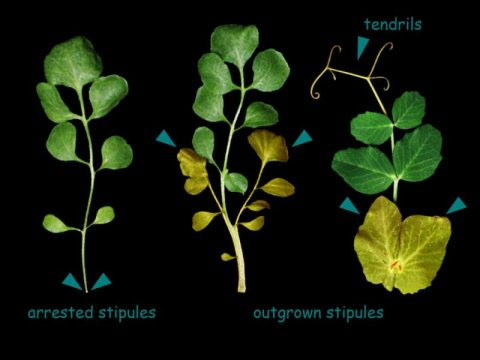Explain why plants have different leaf shapes
According to German scientists, the protein called LMI1 is responsible for the development and shape of leaves as well as the formation of variable leaves, ie the antennae that plants use to climb.
According to Genes and Development magazine, researchers at Germany's Max Planck Plant Research Association under Francesco Vuolo, discovered that the protein named LMI1 is responsible for the development and shape of leaf.

LMI1 protein determines the future shape of leaves.
Scientists were interested in mechanisms for determining the shape of different leaf variations on the same tree. For example, many plant species with two cotyledons usually have small-sized leaves - the appendage of leaves grows from the leaves.
Normally, in addition to the different types of leaves on the same legume, there is an additional leaf form, which is the stubble that the plants use to climb. With the help of genetic achievements plus microscopic observations and mathematical modeling, scientists were able to prove the LMI1 protein determines the future shape of leaves.
In small-leafed plants (small appendages of leaves, sprouting from the leaves), LMI1 protein is synthesized in cells during the development of attached leaves, causing the cell to continue to transmit Growth without division so the size of leaves is limited.
When legumes or other plants must grow stubble to climb, proteins are produced in the upper part of the leaf, where the cells begin to grow but do not divide and as a result, instead of forming a leaf then create a beard-like organ.
- The plants have funny shapes to scary
- Leaf bug
- Kingdonia uniflora one-leaf grass - The most lonely tree
- The reason leaves are different in size
- Explain why some seabirds have pear shapes
- Numerous ornamental plants contain deadly poison
- How does plants 'breathe'?
- Huge data warehouse contributes to explain the strange shapes of insect eggs
- Scientific findings: Crop yields depend on ... leaves
- The 'barefoot' child invented a leaf blower
- Exotic plants, bearing rare spiral shapes
- Produce oil from artificial plants
 Why do potatoes have eyes?
Why do potatoes have eyes? 'Tragedy' the world's largest carnivorous life: Death becomes ... public toilet
'Tragedy' the world's largest carnivorous life: Death becomes ... public toilet Tomatoes were once considered 'poisonous' for 200 years
Tomatoes were once considered 'poisonous' for 200 years Detecting microscopic parasites on human face
Detecting microscopic parasites on human face